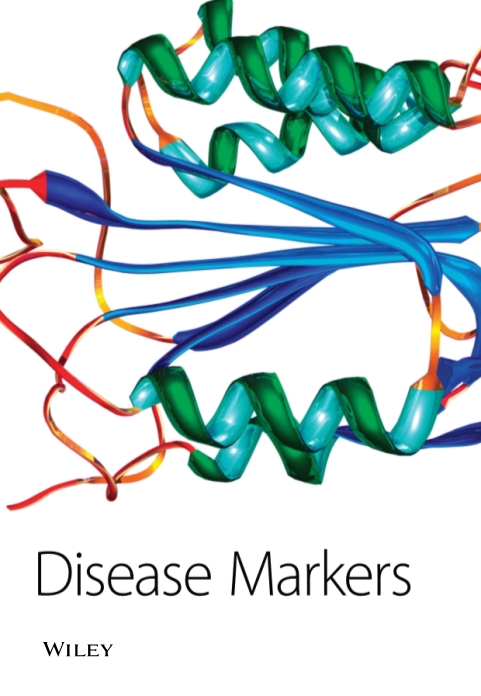Examining the Association of Rare Allelic Variants in Urate Transporters SLC22A11, SLC22A13, and SLC17A1 with Hyperuricemia and Gout
4区 医学
Q3 Medicine
引用次数: 0
Abstract
Genetic variations in urate transporters play a significant role in determining human urate levels and have been implicated in developing hyperuricemia or gout. Polymorphism in the key urate transporters, such as ABCG2, URAT1, or GLUT9 was well-documented in the literature. Therefore in this study, our objective was to determine the frequency and effect of rare nonsynonymous allelic variants of SLC22A11, SLC22A13, and SLC17A1 on urate transport. In a cohort of 150 Czech patients with primary hyperuricemia and gout, we examined all coding regions and exon–intron boundaries of SLC22A11, SLC22A13, and SLC17A1 using PCR amplification and Sanger sequencing. For comparison, we used a control group consisting of 115 normouricemic subjects. To examine the effects of the rare allelic nonsynonymous variants on the expression, intracellular processing, and urate transporter protein function, we performed a functional characterization using the HEK293A cell line, immunoblotting, fluorescent microscopy, and site directed mutagenesis for preparing variants in vitro. Variants p.V202M (rs201209258), p.R343L (rs75933978), and p.P519L (rs144573306) were identified in the SLC22A11 gene (OAT4 transporter); variants p.R16H (rs72542450), and p.R102H (rs113229654) in the SLC22A13 gene (OAT10 transporter); and the p.W75C variant in the SLC17A1 gene (NPT1 transporter). All variants minimally affected protein levels and cytoplasmic/plasma membrane localization. The functional in vitro assay revealed that contrary to the native proteins, variants p.P519L in OAT4 (), p.R16H in OAT10 (), and p.W75C in the NPT1 transporter () significantly limited urate transport activity. Our findings contribute to a better understanding of (1) the risk of urate transporter-related hyperuricemia/gout and (2) uric acid handling in the kidneys.研究尿酸盐转运体 SLC22A11、SLC22A13 和 SLC17A1 的罕见等位基因变异与高尿酸血症和痛风的关系
尿酸盐转运体的基因变异在决定人体尿酸盐含量方面起着重要作用,并与高尿酸血症或痛风的发病有关。主要尿酸盐转运体(如 ABCG2、URAT1 或 GLUT9)的多态性在文献中有大量记载。因此,在本研究中,我们的目标是确定 SLC22A11、SLC22A13 和 SLC17A1 的罕见非同义等位基因变异的频率及其对尿酸盐转运的影响。在 150 名原发性高尿酸血症和痛风的捷克患者中,我们使用 PCR 扩增和 Sanger 测序技术检测了 SLC22A11、SLC22A13 和 SLC17A1 的所有编码区和外显子内含子边界。为了进行比较,我们使用了由 115 名正常尿酸血症患者组成的对照组。为了研究罕见等位基因非同义变异对尿酸盐转运蛋白的表达、胞内处理和功能的影响,我们使用 HEK293A 细胞系、免疫印迹法、荧光显微镜和体外定点诱变法对变异进行了功能表征。在 SLC22A11 基因(OAT4 转运体)中发现了变体 p.V202M(rs201209258)、p.R343L(rs75933978)和 p.P519L(rs144573306);在 SLC22A11 基因(OAT4 转运体)中发现了变体 p.R16H(rs725933978)和 p.P519L(rs144573306)。R16H(rs72542450)和 p.R102H(rs113229654);以及 SLC17A1 基因(NPT1 转运体)中的 p.W75C 变体。所有变体对蛋白质水平和细胞质/质膜定位的影响都很小。体外功能测试显示,与原生蛋白相反,OAT4()中的p.P519L变体、OAT10()中的p.R16H变体和NPT1转运体()中的p.W75C变体大大限制了尿酸盐转运活性。我们的研究结果有助于更好地了解:(1)尿酸转运体相关高尿酸血症/痛风的风险;(2)尿酸在肾脏中的处理。
本文章由计算机程序翻译,如有差异,请以英文原文为准。
求助全文
约1分钟内获得全文
求助全文
来源期刊

Disease Markers
医学-病理学
自引率
0.00%
发文量
792
审稿时长
6-12 weeks
期刊介绍:
Disease Markers is a peer-reviewed, Open Access journal that publishes original research articles, review articles, and clinical studies related to the identification of disease markers, the elucidation of their role and mechanism, as well as their application in the prognosis, diagnosis and treatment of diseases.
 求助内容:
求助内容: 应助结果提醒方式:
应助结果提醒方式:


